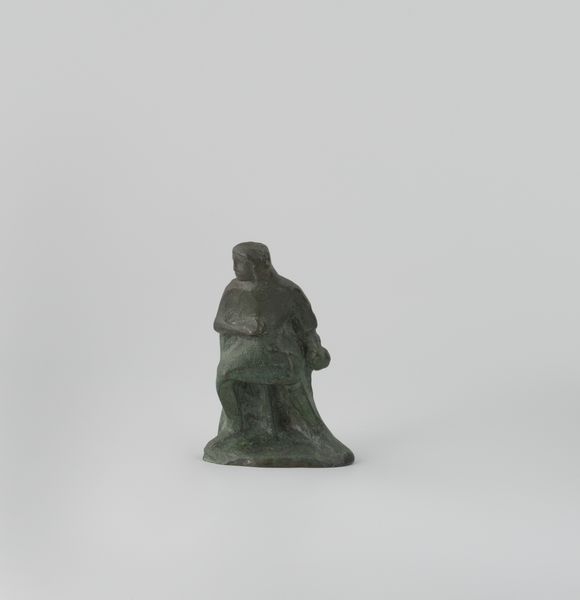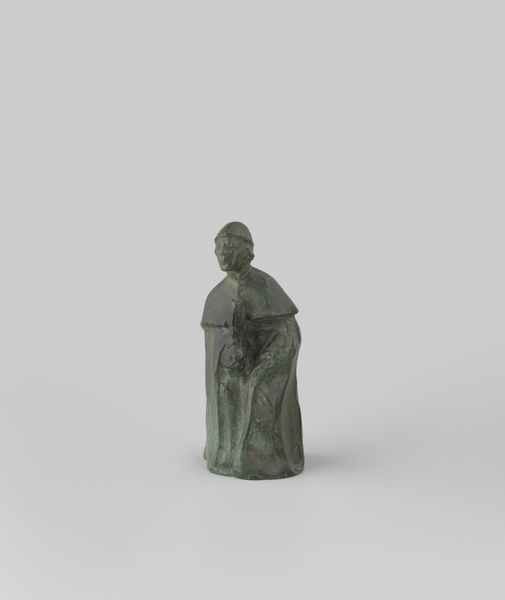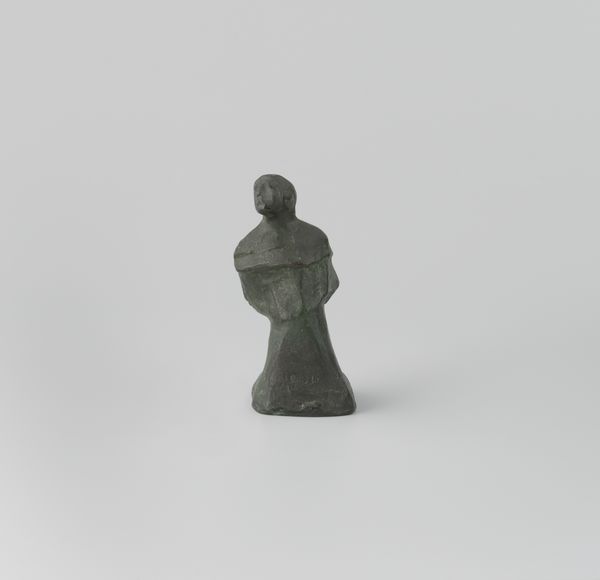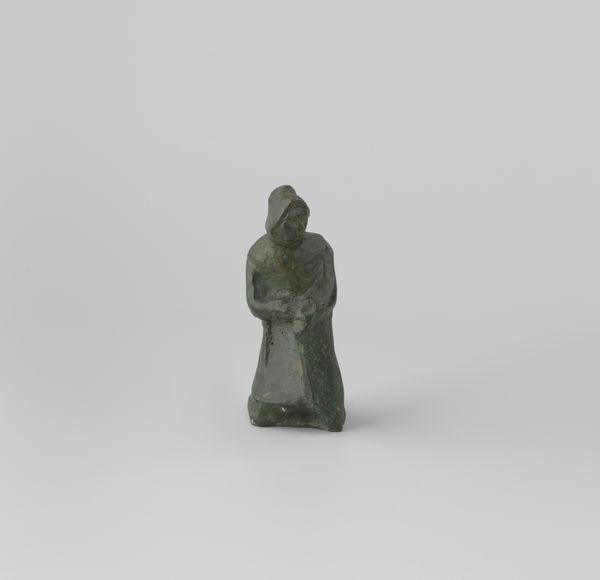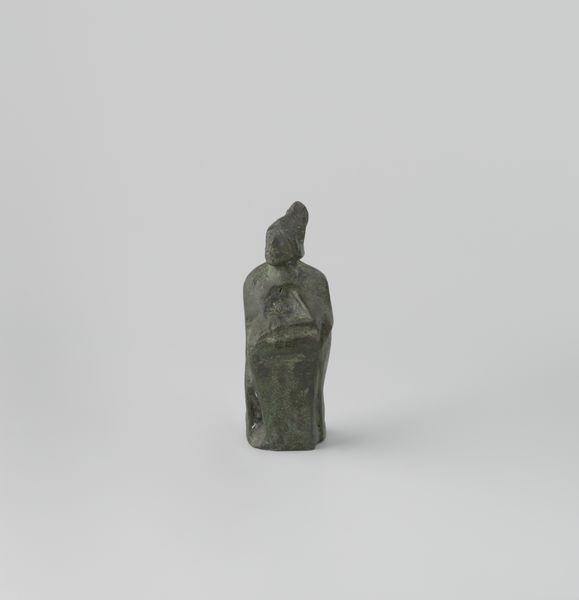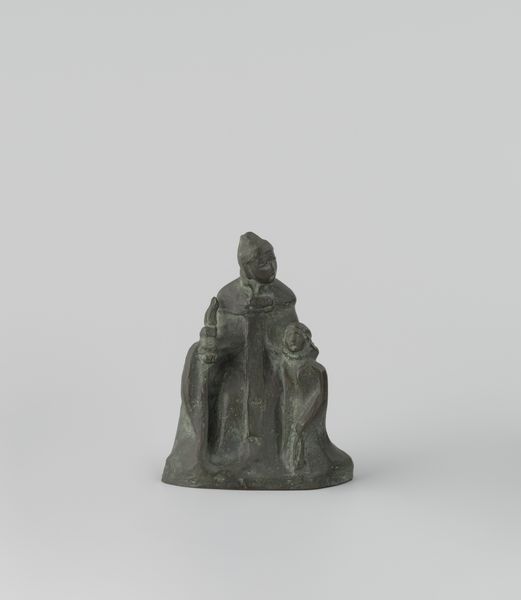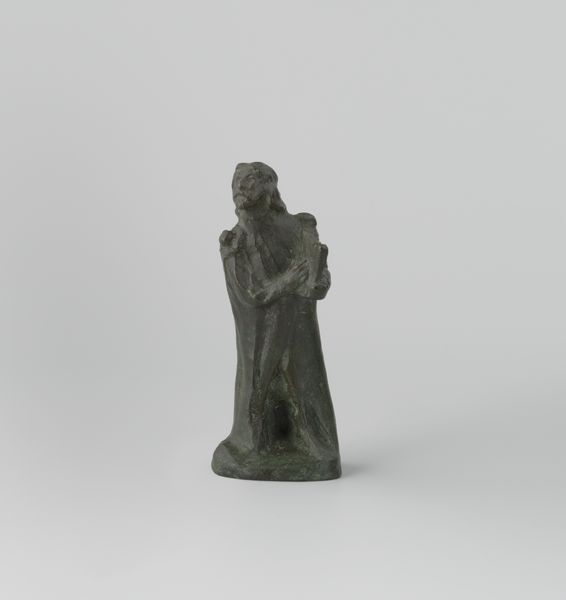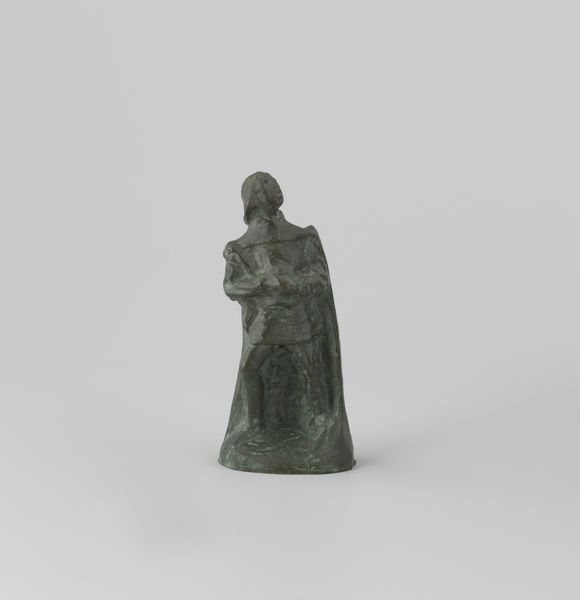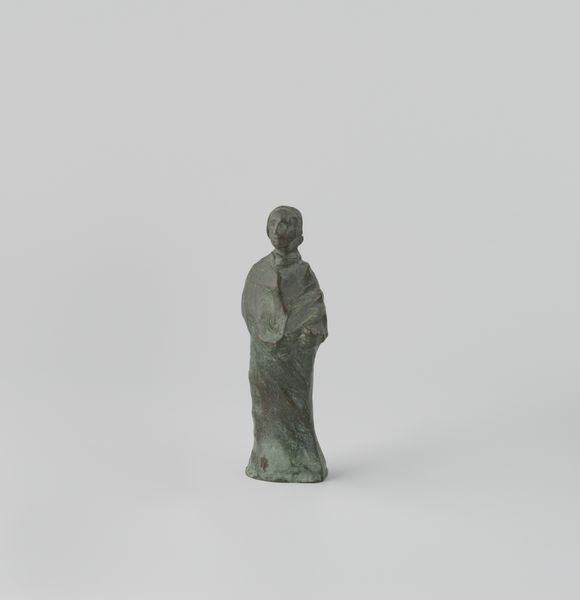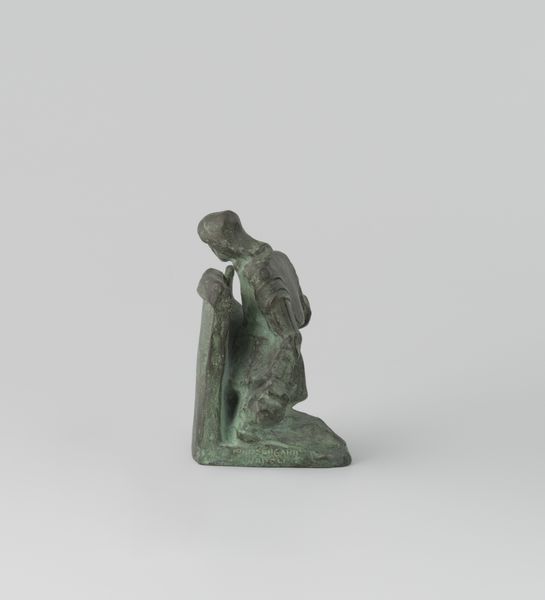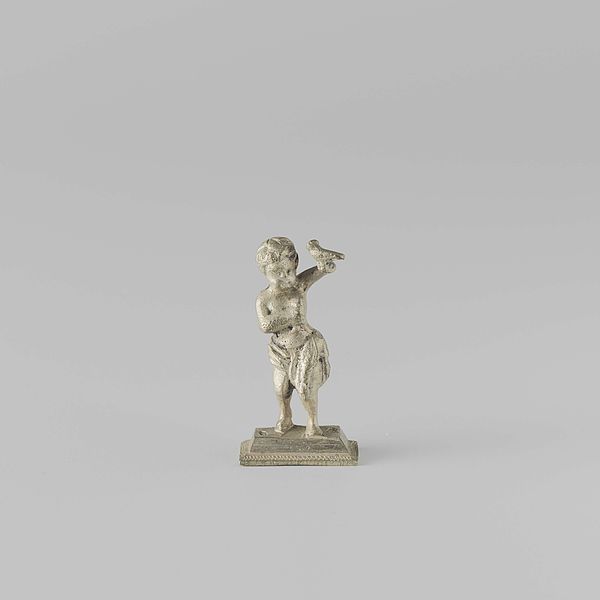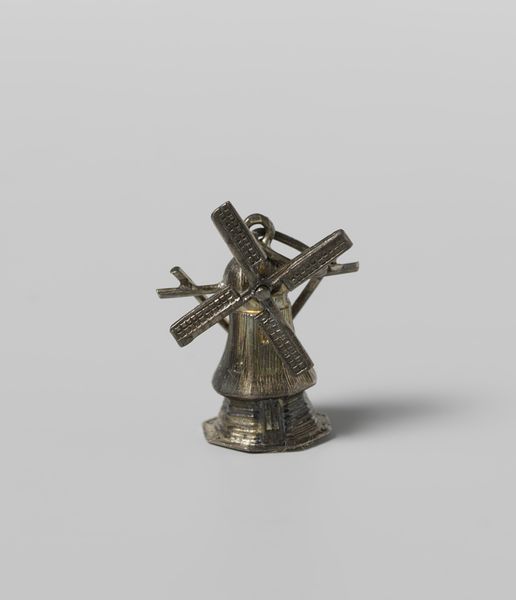
bronze, sculpture
#
portrait
#
bronze
#
figuration
#
sculpture
#
modernism
Copyright: Rijks Museum: Open Domain
Saar de Swart created Pion 6 in the early 20th century, likely in the Netherlands, using bronze. The lost wax casting process by which this sculpture was made involves creating a wax model, encasing it in a mold, melting out the wax, and then pouring molten bronze into the cavity. The rough texture and patina on the surface speak to the artist's hand and the transformative nature of the casting. The figure, with its somewhat indistinct features, invites us to consider the relationship between labor, material, and artistic expression. The social context of this work may reflect an interest in portraying everyday people and scenes, and the dignity of the common laborer, aligning with the Realist movement's focus on depicting contemporary life. Ultimately, understanding the materials, making, and context of Pion 6 allows us to appreciate the artwork's deeper meaning, challenging any traditional distinctions between fine art and craft.
Comments
No comments
Be the first to comment and join the conversation on the ultimate creative platform.
